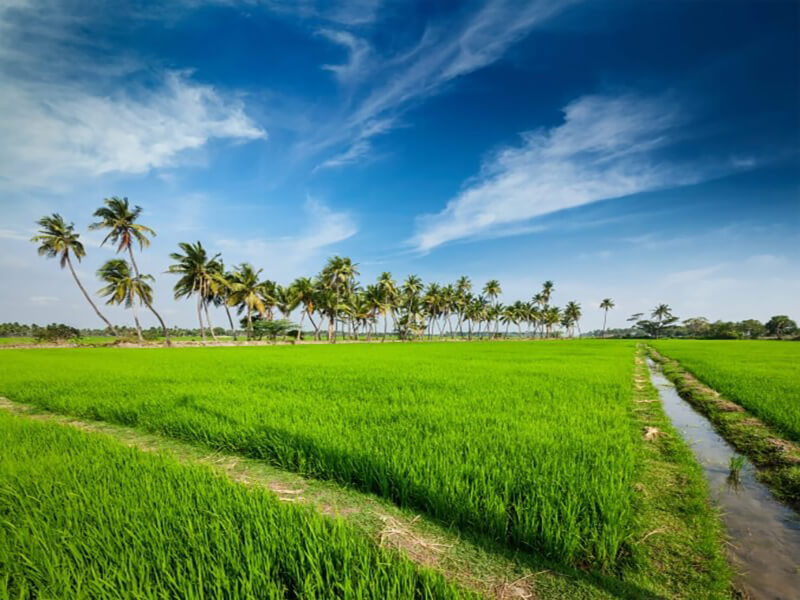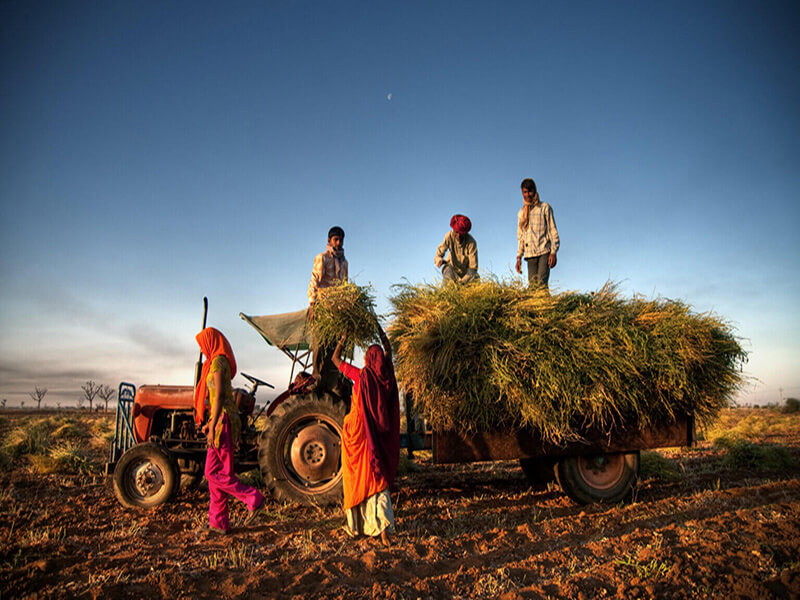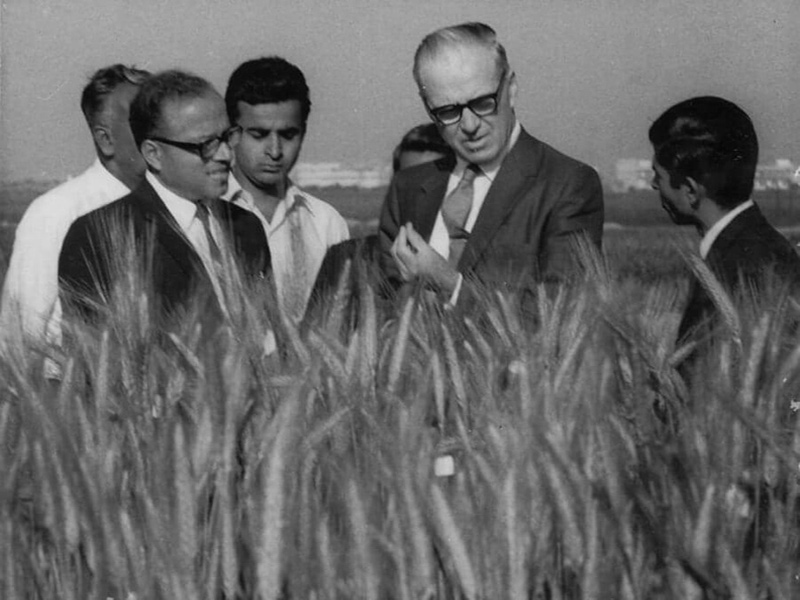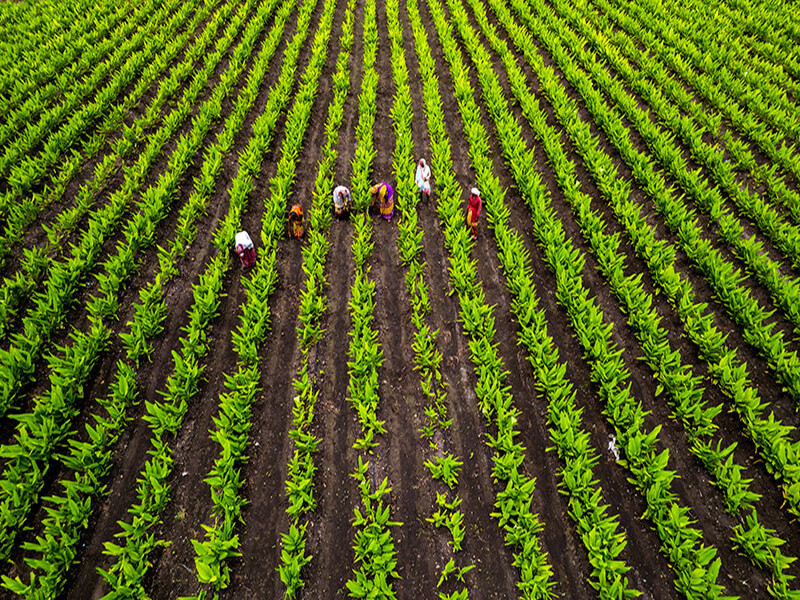The 500-odd farmers of Gurha Kumawatan, a village in arid Rajasthan, are now millionaires thanks to polyhouse farming. Their hard work, innovation and unlimited ambition offers a path to prosperity for others in India.
Nearly 40% of India’s entire geographical area and more than 80% of its water are used up by agriculture.
 TR Vivek
TR Vivek 
Indian agriculture is an extremely complex and vital sector of the economy.
But, going by the stories you read in the Indian press, you’d think it’s one long sob story: farmers committing suicides; perennial poverty; and the weather and price fluctuations making the profession so uncertain that it’s a gamble.
Yes, all of it is real, but, not the only reality.
Here’s why you should care and take pride.
Indian food and agriculture a $630 billion dollar sector. It contributes nearly 18% to Indian’s $3.5 trillion economy. That’s almost more than the GDP of Norway or almost twice Pakistan’s entire economy.
Incredible diversity
Indian agriculture feeds 1.4 billion people, guaranteeing national security. It is incredibly large and diverse.
Nearly 40% of India’s entire geographical area, around 140 million hectares or area roughly the size of Peru, is used for agriculture. Only the US has more farmland than India.
India has 15 different agro-climatic zones, each with its own unique set of weather and soil conditions, which determine the types of crops that can be grown in the region.

From the cold and high-altitude western Himalayas where apples and peaches grow, to the hot, humid and flat-as-a-dosa plains of the eastern coast that yield enormous quantities of rice, sugarcane and fruits like banana, this diversity has helped India achieve self-sufficiency in food production and become one of the major food producers in the world.
India has two major agri seasons called Kharif and Rabi. Kharif, the summer season, lasts from April to September. Most of India’s rice grows in this season. Rabi or the winter season, when all of its wheat is produced, lasts from October to March.
Such diversity means the country can produce almost every major agricultural commodity.
India produces 210 million tonnes, or nearly 25% of the world’s milk making it the biggest in the world. It is the second largest producer of rice, wheat, fruits and vegetables, cotton, and sugarcane.
However, until the 1970s India routinely faced food shortages.
Seeds of modernity
In the 1960s, it had become a ship-to-mouth economy. It relied heavily on substandard and subsidised foodgrains from the US as aid. This was a recurring national humiliation.

In response, India in partnership with international organizations such as the Rockefeller Foundation and International Rice Research Institute, adopted new technology, high yielding varieties of rice and wheat, and increased its irrigation network.
This was called India’s Green Revolution, perhaps Independent India’s most transformative event. Crop yields increased; food shortages came down significantly.
Thanks to Green Revolution, India’s food grain production has increased six times from 50 million tonnes in 1950 to 315 million tonnes in 2022, while the population increased about four-fold from 360 million to 1.4 billion.
From begging for food aid, India is now food surplus. In 2021 India exported agricultural commodities and processed food worth $50 billion.
India provides 92 million tonnes or nearly a third of all the grain it produces at subsidised rates through various welfare schemes to nearly 800 million poor people.
But the good news kind of ends here.
An ‘Evergreen Revolution‘
Despite the improvements, Indian agriculture remains massively inefficient by global standards. It employs nearly half of the country’s population to contribute less than a fifth of the economic output. India produces just four tonnes of rice per hectare compared to China’s average of seven tonnes.
About 87% of Indian farmers have less than two acres of land, roughly the size of a cricket field.

The landholding size in India has been declining over time. As families grow, the land gets fragmented of land into smaller plots.
Smaller farms make it difficult for farmers to adopt modern technologies and practices that require a larger scale of operation.
For example, large-scale mechanization, precision farming techniques like drip irrigation, and other modern inputs and technologies may not be feasible for farmers with small landholdings.
The shrinking of landholding size has also contributed to declining incomes and increasing poverty among farmers in India. With smaller landholdings, farmers may have less land available for cultivation, which can lead to reduced crop yields and lower incomes.
But a second Green Revolution, or what MS Swaminathan, one of its architects calls an ‘Evergreen Revolution’ of can reverse this trend.
Promoting the use of technologies that make farming efficient, produce more with lesser resources, produce healthier and ecologically sustainable food, and giving farmers better access to local and global markets will allow Indian agriculture to not just ensure the country’s food security but also make it enormously prosperous and healthy.
The 500-odd farmers of Gurha Kumawatan, a village in arid Rajasthan, are now millionaires thanks to polyhouse farming. Their hard work, innovation and unlimited ambition offers a path to prosperity for others in India.